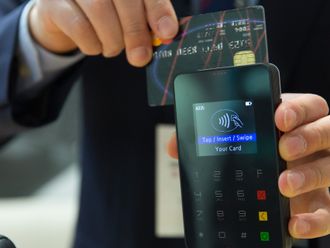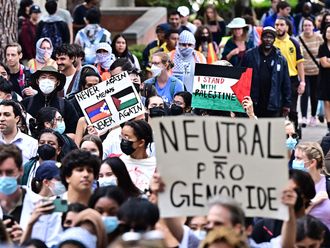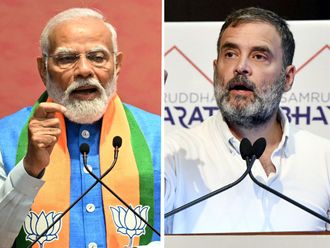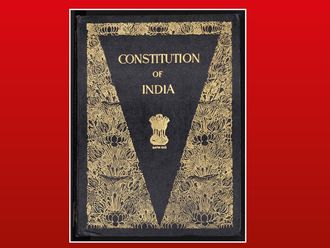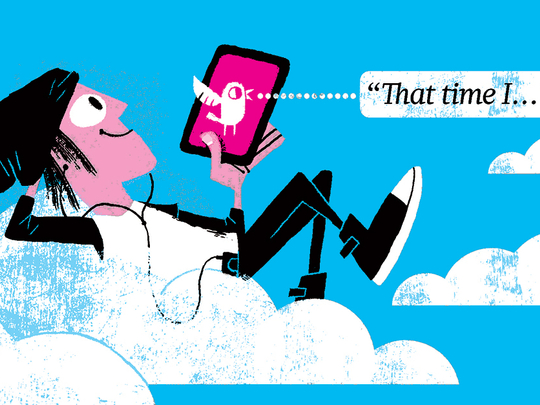
In March, American singer Taylor Swift posted some photos from her trip to an undisclosed tropical location with then-boyfriend Calvin Harris. One caption read, “That time we finally took a vacation.”
This summer, Swift went on another jaunt with a new boyfriend and a group of girlfriends. Elle covered the resulting high jinks with a piece titled, “That Time Cara Delevingne Scared the [expletive] out of Taylor Swift and Tom Hiddleston.”
The expressions “that time I” and “that time when” have bubbled up all over the internet, in headlines, in promotions and on social media. Just recently, there was “That Time When Johnny Depp Looked Just Like Justin Bieber,” “That Time I Stumped a Gallup Pollster,” and “That Time I Came Face to Face With an Anti-Semite”.
It’s a strange construction, one that doesn’t make much sense. Why wouldn’t Swift just write, “We finally took a vacation?” Why tack on an unnecessary grammatical flourish?
The answer has to do with the way users have reshaped language online. “That time I” works in real time to make readers feel like they’re part of an in-group, creating collective nostalgia for events that just took place. In some way, it’s a neat linguistic trick. But when we’re nostalgic for things even as they’re happening, do we miss out on actually experiencing the things we’re so excited to share?
Like most digital language innovations, “that time I” started with teenagers. As Clive Thompson documented on the Message, teens on Tumblr, Twitter and Instagram have been using variants of this construction — “that feel when,” “that awkward moment,” “that awkward feeling” — to describe painful moments for years. You know, like, “That moment when you make a extremely stupid face to your friend across the room and someone is looking at you,” or “That awkward moment when you’ve already said ‘what?’ three times and still have no idea what the person said.”
The expression gave people a way to universalise their experiences, making the faux pas of growing up seem less personal and painful. As linguist Gretchen McCulloch explained to Thompson, “It’s saying, ‘this thing has happened to me, this has happened to me before and this was my reaction, it’s probably happened to other people and they’ve also reacted the same way.”
As with so many other teen memes online, the phrase spread across the internet to non-teenage users and evolved into new versions. Around 2011, “that time I” began popping up on Twitter, along with “that awkward moment” and “that feeling when,” to tell stories of discomfort or angst. Often, the authors of these posts would share only something like “That time when you’re the last one up at a sleepover” or “That time when you get close to someone and you think that y’all will be friends forever but then you slowly drift apart and never speak,” leaving readers to fill in the blanks.
Eventually, “that time when” grew into a distinct phrase, separate from the rest of the “that awkward feeling” family, although still sometimes used interchangeably. Now it often describes a real event happening in the world, something surprising, awesome or terrible, often accompanied by a video or an image — only the intimacy and urgency of teen life are still inherent in the phrase. “That time when a fan caught Serena Williams,” from Wimbledon’s Facebook feed, or “That time when @uldouz and I completely tore up the dance floor with this hype mariachi band!”
What makes “that time I” so appealing? As Northwestern University linguist Gregory Ward explains, it’s the demonstrative “that,” which often signals a common, shared knowledge or reference between a speaker and a hearer. “That dog kept me awake last night,” for example, implies that the dog has been mentioned before. Using “that,” Ward says, creates a sense of closeness. “When I evoke a situation — that time when, that party when,” he says, “it also often has this sense of shared intimacy.”
Yet, as used online, the locution usually refers to an experience not shared between the writer and the reader. In fact, the expression is often deployed as a framing device for obscure, bizarre or personally meaningful information that the reader would otherwise have no access to: Swift’s beach vacation, some surprising event in the past (“That time when kd lang emailed Neko Case and Laura Veirs”) or a tidbit of humble-braggery (“#ThatTime thecamera caught me giving a high five to @jimmyfallon as he sprinted thru the audience”).
This is where the phrase’s fragmentary nature enables it to do something magical. It’s not “I remember that time when” or “It was that time when” — it’s a moment detached from the information provided by verb or subject. The intimacy created by “that time when” is a warm, engulfing fog, with no use at all for grammatical and logical scaffolding. Without having been at Swift’s party — and without the construction of the sentence reminding us that we weren’t there — we can all feel like we’re part of the #squad. Used by celebrities, and not by teenagers, it’s a way of creating a false sense of relaxed togetherness that is also a branding exercise. It’s easier to sell makeup or clothing to people who think of themselves as your friends, even if you’ll never meet them IRL.
“That time when” also points out a fascinating collapse in the time it takes for a memory to receive nostalgic treatment on social media. Until recently, “that time when” mostly referred to things in the past. On Tumblr or Instagram, the construction frequently pops up next to the extremely popular “throwback Thursday” or “tbt” hashtags: for instance, “#thattimewhen I was a #potato. #tbt” on Instagram, next to a round-cheeked baby photo. “That time when” implies a special moment, a memory you’re looking back on with fondness or because it’s just awesome, and in hopes that others will have the same response: “#ThatTime I got to play softball on the old Yankee Stadium field during its final year of existence courtesy of #Amtrak.”
But “that time when” can also refer to something that’s going on right now — a memory in the process of being created. You could already see this shift starting in 2009 or so: “remember that time when i flooded my house? oh yea... that happened tonight.” Today, people sometimes use it to introduce any notable thing they might be doing or that might be happeningto them, even in the moment: “#ThatTimeWhen my #cat took a selfie while we were watching #BBC#HouseOfCards”; “#thattimei#gotpublished.”
“It’s kind of like a sepia filter for language,” said Ben Zimmer, a linguist and the executive producer of the Visual Thesaurus. “Something just happened to me that will be super-memorable, and I will be remembering this when I’m older and saying, ‘Wow, remember this time?’“
There’s something ersatz about our weird online nostalgia for very recent events. In that sense, “that time when” is extremely useful, hugging the recent past and a speaker’s audience close in a way not many other phrases do. And yet it heightens the disturbing slipstream effect of internet time, where we never feel quite in the moment, instead always observing it through various mediating devices, recording it, time-stamping it, commenting on it, as it fades away as surely as one of Taylor Swift’s boyfriends. “That time when” will, despite our best efforts, eventually be forgotten.
— Washington Post
Peterson is a journalist living in Washington.


